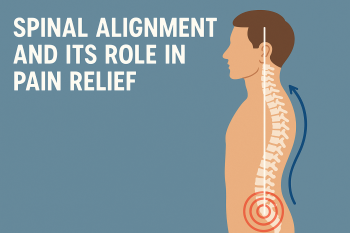
Spasmodic Torticollis Doctor Wasco | Spasmodic Torticollis Treatment Wasco
Spasmodic torticollis can be recognized by a person whose head is rotated and extended backward and locked in the position. Spasmodic torticollis is a chronic condition where the head is stuck in this type of position and also has a rhythmic contraction that is involuntary.
There can be several contributing factors to the onset of this condition: upper cervical spine trauma, side effects of psych medication, and predisposing genetic factors. Later in this post, we will discuss a little-known procedure called Blair Upper Cervical that has been helping not only spasmodic torticollis patients but other chronic health conditions.
Below is a list of the types of spasmodic torticollis. Depending on which muscle groups are involved determines how the head is pulled off-center: There are three distinct variations of Spasmodic Torticollis: Tonic, in which the head turns to one side, Clonic, which involves the shaking of the head, and Mixed which involves both turning and shaking.
The turning of the head is generally considered to fall into one of four categories:
- Rotational, in which the head turns to one side or the other
- Laterocollis in which the head is pulled toward the shoulder
- Retrocollis in which the head is pulled to the back, or
- Anterocollis in which the head is pulled forward.
In fact, most people’s ST is more complex, having a combination of “pulling” from among these four categories. Upper Cervical Chiropractic has Been Shown To Be An Effective Treatment For Spasmodic Torticollis
While conventional medicine has not found a cause behind Spasmodic Torticollis, it is most likely caused by the trauma to the neck. The cervical spine musculature is controlled in the brainstem and vestibular nucleus. There are nerve pathways that come from the joints of the neck to the vestibular nucleus, which controls the tonicity of the neck muscles. It is possible that neck injury resulting from whiplash, sports injuries, and other trauma can be the precipitating factor in spasmodic torticollis.
Injuries to the neck can cause damage to the ligaments and soft tissue that allow for normal joint motion. Abnormal joint motion causes aberrant effects on the central nervous system and not only can cause involuntary muscle spasm but can also cause dysfunction anywhere in the body.
Some patients with dystonia will recall a severe accident that predates the onset of their symptoms. Others had trauma and their problems took years to develop.
What Do Upper Cervical Chiropractors Do? | Wasco Chiropractor
Upper Cervical Doctors focus all of their practice focus on the top two bones in the neck and their relationship to the central nervous system. They run objective neurological tests to determine where you have nerve irritation.
Once located a set of precise upper cervical X-rays is taken to specifically determine which joint and what direction it has misaligned. The information is then used to make a precise upper cervical correction.
The patient is then monitored over a period of time to determine whether or not the misalignment has returned. The goal is to maintain the correction so the central nervous system can restore normal function. We hope that this blog has been informative and will get into the hands of those that need it for their own healing.
References:
Spasmodic Torticollis – Signs and Symptoms
Shuper A, Keller A, Arbel N, Inbar D, Steinberg T. Trauma-induced dystonia and camptocormia in a child. Pediatr Neurol. 2007 Mar;36(3):184-5.
Herman MJ. Torticollis in infants and children: common and unusual causes. Instr Course Lect. 2006;55:647-53.
Takemoto M, Ikenaga M, Tanaka C, Sonobe M, Shikata J. Cervical dystonia induced by cervical spine surgery: a case report. Spine. 2006 Jan 1;31(1): E31-4.
Kaeser HE, Ettlin T. Little known sequelae of sprains of the cervical spine. Schweiz Rundsch Med Prax. 1999 Dec 2;88(49):2021-4.
Tarsy D. Comparison of acute- and delayed-onset posttraumatic cervical dystonia. Mov Disord. 1998 May;13(3):481-5.
Foley-Nolan D, Kinirons M, Coughlan RJ, O'Connor P. Post whiplash dystonia well controlled by transcutaneous electrical nerve stimulation (TENS): case report. J Trauma. 1990 Jul;30(7):909-10.
Jona JZ. Posterior cervical torticollis caused by birth trauma. J Pediatr Surg. 1995 Oct;30(10):1526-7.
Slate RK, Posnick JC, Armstrong DC, Buncic JR. Cervical spine subluxation associated with congenital muscular torticollis and craniofacial asymmetry. Plast Reconstr Surg. 1993 Jun;91(7):1187-95; discussion 1196-7.
Keller J. Childbirth difficulties & torticollis in the newborn. Union Med Can. 1958 Feb;87(2):179-81.
Tonomura Y, Kataoka H, Sugie K, Hirabayashi H, Nakase H, Ueno S. Atlantoaxial rotatory subluxation associated with cervical dystonia. Spine. 2007 Sep 1;32(19):E561-4.




Leave a comment